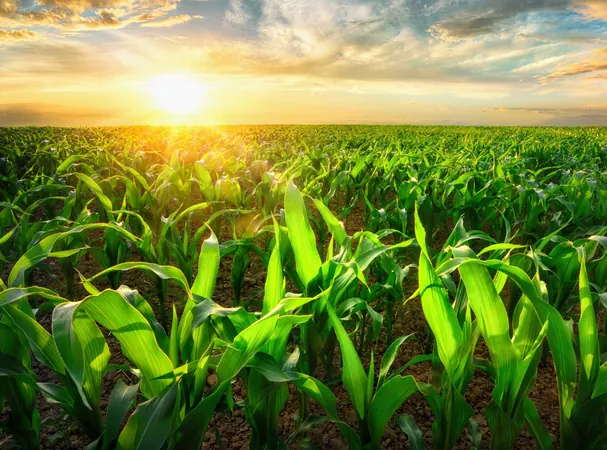
How the Corn Belt of the U.S. Shapes Its Own Weather: A Surprising Connection Revealed!
2025-01-08
Author: Li
The Corn Belt Defined
This vital agricultural region stretches across twelve states, from Ohio to Nebraska, transitioning from natural prairies to a mosaic of irrigated croplands. As corn reaches maturity in the summer, the phenomenon of precipitation recycling peaks, particularly during dry spells when moisture is scarce from other areas.
Advanced Modeling Techniques Unveiled
To uncover these intriguing insights, researchers employed powerful computer modeling techniques. They utilized the NSF NCAR-based Weather Research and Forecasting (WRF) model to simulate atmospheric conditions with impressive detail and the Noah-MP model for a thorough analysis of crop growth systems. By juxtaposing simulations that included various farming factors against those without, scientists detailed the specific contributions of each to precipitation recycling.
Implications for Agricultural Strategies
The implications of this study are profound, offering enhanced rainfall predictions that can inform water management strategies and planting decisions. Recognizing precipitation sources is fundamental not only to agriculture but also to the broader understanding of freshwater availability in the region.
The Dark Side of Precipitation Recycling
While precipitation recycling may appear beneficial, it harbors challenges. Increased dependence on local water sources can strain shallow groundwater reserves. The over-pumping of groundwater for irrigation threatens the stability of this crucial feedback loop, potentially leaving the region more susceptible to droughts if external moisture sources diminish.
Global Relevance and Future Directions
The findings from the U.S. Corn Belt also offer valuable lessons for agricultural regions worldwide. Areas like India’s Punjab or China’s North China Plain may experience similar precipitation recycling, emphasizing the global relevance of these climatic interactions.
Understanding localized climate dynamics can create a framework for managing water resources amid a warming climate.
Moreover, the discoveries from this research could catalyze advancements in precision agriculture, enabling farmers to fine-tune methods for optimizing water use, increasing productivity, and minimizing environmental impacts.
As our understanding of agriculture’s role in climate develops, it’s clearer than ever that the relationship between farming and weather is intricate and multifaceted. By examining these environmental patterns, we not only promote the sustainability of the Corn Belt but also equip ourselves with insights to tackle global agricultural challenges.
The full study is available in the esteemed journal Proceedings of the National Academy of Sciences, offering a treasure trove of information for those keen on understanding the intertwining paths of agriculture and climate. Stay tuned as we continue to uncover the astonishing ways in which human activity shapes the natural world!


 Brasil (PT)
Brasil (PT)
 Canada (EN)
Canada (EN)
 Chile (ES)
Chile (ES)
 Česko (CS)
Česko (CS)
 대한민국 (KO)
대한민국 (KO)
 España (ES)
España (ES)
 France (FR)
France (FR)
 Hong Kong (EN)
Hong Kong (EN)
 Italia (IT)
Italia (IT)
 日本 (JA)
日本 (JA)
 Magyarország (HU)
Magyarország (HU)
 Norge (NO)
Norge (NO)
 Polska (PL)
Polska (PL)
 Schweiz (DE)
Schweiz (DE)
 Singapore (EN)
Singapore (EN)
 Sverige (SV)
Sverige (SV)
 Suomi (FI)
Suomi (FI)
 Türkiye (TR)
Türkiye (TR)
 الإمارات العربية المتحدة (AR)
الإمارات العربية المتحدة (AR)